So little to do – so much time
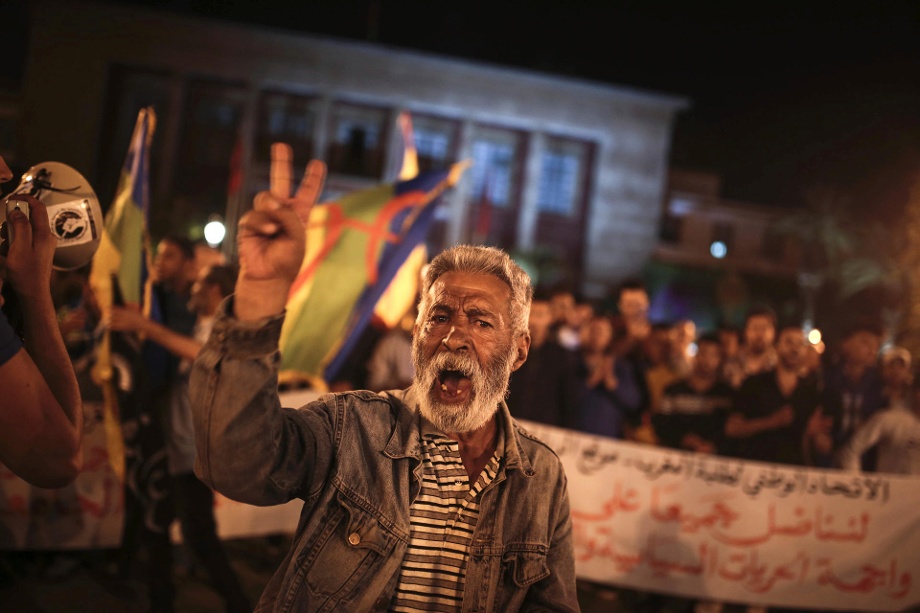
The mountainous Rif region of northern Morocco is a blighted area. Its black economy, isolation, and an overabundance of time are constituents of the fatal mixture currently afflicting northern Morocco.
At first glance, the first of these three actually appears more like a blessing. Without its smuggling, for example, a region like the Rif would struggle to survive at all. Cigarettes, alcohol, clothing and electronics are all plentiful in Spain and highly desirable to Moroccans. Illegal trafficking is hard work. The business of getting goods from one side of the border to the other means shifting heavy loads over large distances. With trading on the black market virtually the only option, however, many families have no alternative but to undertake these arduous journeys.
This onerous burden usually falls to the lot of the women in the Rif region. It is they who set out every day for the border and the Spanish enclaves of Ceuta and Melilla to buy tax-free goods for resale in Morocco. The smugglers must set off in the middle of the night and walk many miles if they are to reach the border by early morning and find a place in the queue. Competition for places is fierce, with up to 25,000 smugglers arriving on any given day, all desperate to reach the city centres of Ceuta and Melilla.
Securing the best place in the queue
The opening of the border is the signal for the start of a frantic scramble to see who can reach the department stores first and snap up the most desirable or best goods on offer. Items in the latter category are particularly coveted because it is important to load as much as possible onto one's back if the journey is to be worthwhile. At between 50 and 90 kilograms, their loads are bigger than the women themselves, who sag beneath their heavy loads as they struggle through the burning heat of the day to make their way back over the border.
And for many it will not be a single journey. Some of the women make up to six trips a day in order to ensure there is enough food on the table for the entire family. Very few of the women are working only for themselves according to women's rights organisation "Tawaza". The vast majority of them would stop immediately if they had the choice – especially the older ones.
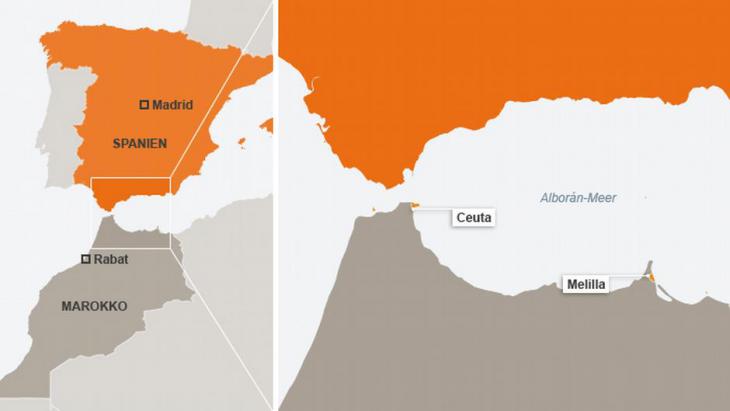
The scene at the congested border crossing is chaotic. The seething mass of traders, jostling together, all trying to push their way back to the Moroccan side at the same time: huge crowds of people, men and women, bent double under their heavy loads, scrambling to make progress along the narrow border crossing. It's a spectacle that takes place under the watchful eyes of Spanish border guards and Moroccan police. So why is it allowed to happen?
Thriving black market
Quite simply, it is allowed because entire towns on both sides of the border depend on the illegal trade for their livelihood. In the case of Ceuta, for example, a city best known for its shabby treatment of refugees, the black market has become the main source of income and long since integral to the city's survival. On the Moroccan side of the border around 400,000 people are indirectly dependent on the women's work. Around a tenth of the population of northern Morocco, rely on the smugglers to put food on their tables. In the Rif Mountains there are precious few alternatives, because the cash crop the region is famous for is not one intended for easy resale.At the same time, the illegal cross-border trade with Spain is also to blame for this lack of alternatives. The government in far-off Rabat sees little reason to bother introducing agricultural economics or other training programmes to help stimulate the rural economy – after all, the Rif takes care of itself.
Dead-end Rif mountains
And this brings us to the region's second problem. For a long time it has been an isolated area. Not only is it off the beaten track geographically; culturally and politically, it has never wanted to be part of Morocco either. This isolationist attitude has brought many disadvantages to the region, but it has also made it eminently suitable for another illegal activity that helps keep the region afloat.
Topographically, the inaccessible mountainous area is a dead end. Hemmed in between the Mediterranean to the north, the permanently closed border with Algeria to the east, the high mountain peaks of the Rif chain to the south and the Atlantic to the west, some places here are 70 kilometres from the nearest road. A glance at the Moroccan railway network is enough to make clear the central government's attitude to the region. The main railway route, carrying what are probably the finest trains on the African continent, runs along the Atlantic coast between Casablanca and Tangiers – in other words, somewhere else.
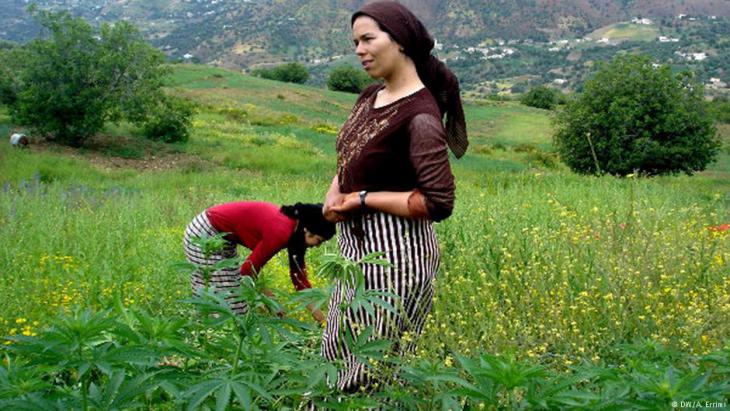
Just a few rail lines detour to the major inland cities, such as Marrakesh, Fez or Oujda; like lines of demarcation they skirt around and separate the Rif from those areas on which most of the government investment in infrastructure, economy, education and administration focuses.
The division into privileged and disadvantaged areas has a long history in Morocco. Hassan II, father of the current monarch Mohammed VI, resolutely shunned the Rif. He never as much as set foot in the region, far less ever contemplate spending money on it. Given that his reign lasted 38 years, it is clear that the people of the Rif have long had to look out for themselves.
Cannabis aplenty
The secluded nature of the region does, however, produce ideal conditions for one thing: cannabis growing – and lots of it! The huge plantations of the Rif region are world famous and, though a small region, the area has been the largest producer and exporter of hashish since the 1980s, even outdoing Afghanistan.
Morocco reputedly produces half of the world's hashish, with around 200,000 farmers growing hemp and around 700,000 making their living from it indirectly. The Rif, however, remains one of the poorest areas in the country. In a province such as Chefchaouen in the heart of the mountains, large acreages have been turned over to cannabis production according to the most recent report by the United Nations Office on Drugs and Crime. As a consequence, very little land is left for alternative crops such as olives or figs, with the cash crops pushing everything else aside. Even the local tourism industry promotes the hemp plantations to visitors.Though big money is made in drug production, very little of it finds its way into the hands of the hemp farmers. After the harvest much of their time is taken up by the so-called hemp beating. Hashish production is still largely carried out by hand by the men here, the beating of the hemp providing the rhythmic background to summertime in the mountains. Two sticks are used to pound the dried flowers until they release a few grams of the resin crystals from which the hash is then pressed.
A raw plant of 100 kilograms will produce up to three kilograms of drugs, depending on quality. Just as in the traditional agriculture, women and children are also involved in the process. The hemp plantations are usually small, family-run businesses supplemented by a few local harvest and production workers. Traditionally, the farms in the region are passed down from father to son; a centuries-old practice that secures the livelihoods of Rif hemp farmers and their offspring. Nowadays, however, there are few among the younger generation who see much of a future in hemp farming. Their interest has turned to study as an escape route from the dead-end Rif.
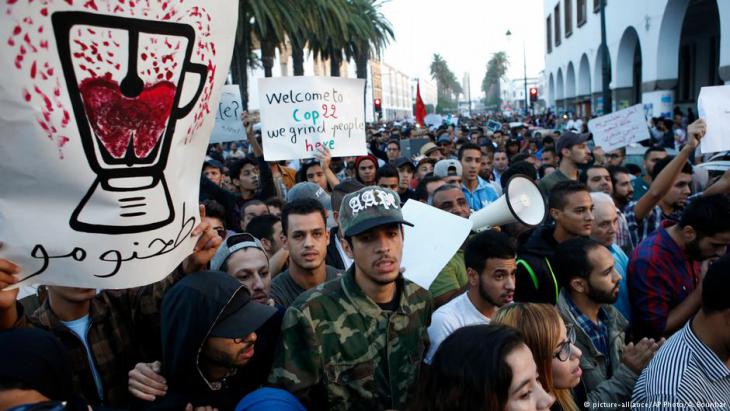
The hashish farmers have their fair share of problems – constantly forced to wrangle with others for their share of the scarce water resources, they are exploited by unscrupulous middlemen and live in constant fear of the police. Their crops are bought up in bulk on a weekly basis for just a few hundred euros. Sometimes there are police raids to contend with. And as if all that were not enough, they are liable to land in prison if they fail to come up with the money demanded to pay off corrupt officialdom. Only the big drug barons with their contacts to international cartels are able to afford such payments.
Drugs and terror
It is not only the drugs mafia who find the isolation of the Rif region useful. It has also become an appealing refuge for terrorists. For some time now there have been reports of drugs gangs and terrorists joining forces to form a joint cartel. Its network even extends to IS, which could enable them to link up with the cannabis trade and find recruits among the ranks of desperate young Rif Moroccans.It could be said that these desperate young people have fallen victim to the region's third blight – a surfeit of time. Time is a commodity that the younger generation in the Rif, particularly in the cities, has in abundance, much more so than in other parts of Morocco. Unfortunately it is a commodity that can be put to very little use.
Hanging around
In the city of Al-Hoceima, for example, which lies on the Mediterranean coast, almost exactly half way between Ceuta and Melilla, there is simply nothing to do – no leisure activities, no culture, and no work. Groups of young men hang around, smoking in the squares and on street corners by day and in cafes in the evenings. There is nothing to do but wile away the long hours and drink tea. It is the male population that is visible here; women are not welcome in the cafes and expected to stay at home. The young unemployed of the coastal town are ubiquitous, as almost everywhere else in North Africa, where the average age is around 25.
Many eke out a meagre living doing odd jobs for seven to ten euros a day, such as helping out in a tailor's shop or washing dishes. Such jobs last for three or four months in the year; the rest of the time is spent looking for work.
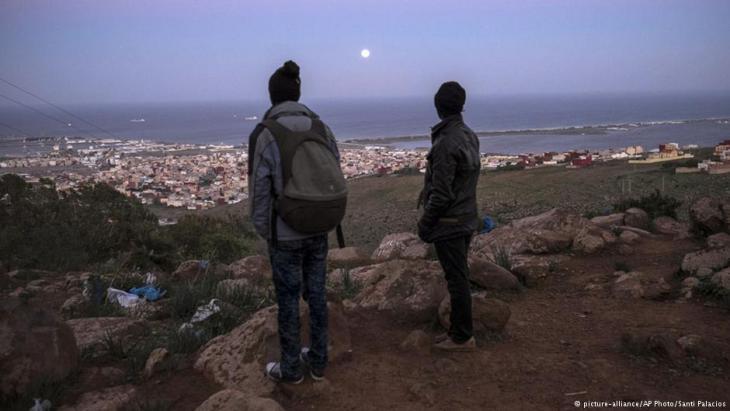
The dream of escape
There is no doubt about what the main topic of conversation on the street corners and cafes is? Emigration is the talk of the town. Everyone here dreams of escaping their lot. The destination – Spain, Belgium or Germany; it doesn't really matter, as long as it's Europe, where everything is better. Even the children and young people want to leave Al-Hoceima. The dreams they have of a brighter future somewhere else in the world are all they have.
At least that's the way it was until the end of last year. Then something happened that brought new hope. Suddenly people began to talk about the possibility that together they just might be able to do something to change things.
For some months now this hope has been sustaining a growing popular agitation. The young people of the Rif have had enough of their present lives and bleak prospects. It was in November of 2016 when one of their number, who actually had a job, died under circumstances that have never been fully explained. Mohsin Fikri was a fish-seller who got into trouble with the police when they confiscated his illegal swordfish catch and threw it into a refuse truck. He jumped in to try to retrieve it and was crushed to death by the waste compacter. Why and by who it was turned on remains a matter of speculation and anger.
The intensity of the storm of protest caused by the death surprised the authorities, as did the resoluteness of the protesters. Even now, the authorities in Rabat seem incapable of understanding why it is that so many young people in Al-Hoceima apparently have nothing better to do than organise regular mass protests and vent their frustration on the streets. Perhaps the young demonstrators were also surprised by their own actions at first. But what else could they do?
And this is precisely the problem. The protests will not stop for this reason. And if they do, they will certainly flare up once more, sooner or later, perhaps in a different part of Morocco … or in Tunisia, Algeria or Libya. The three afflictions that blight the Rif are familiar throughout North Africa.
Susanne Kaiser
© Qantara.de 2017
Translated from the German by Ron Walker